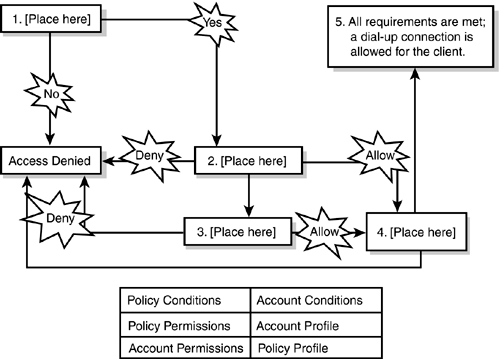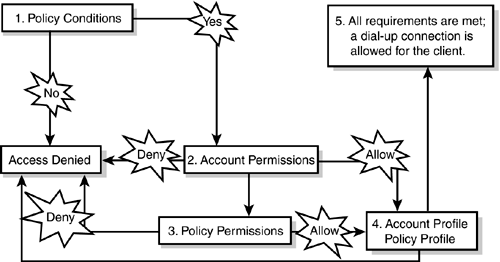| The format of Microsoft exams can vary. For example, many exams consist of a series of case studies, with six types of questions regarding each presented case. Other exams might have the same six types of questions but no complex multi-question case studies. For the Design exams, each case study presents a detailed problem that you must read and analyze. Figure 1.1 shows an example of a case study. You must select the different tabs in the case study to view the entire case. Figure 1.1. This is a typical case study.  Following each case study is a set of related questions. These questions can be one of six types (which are discussed next ). Careful attention to details provided in the case study is the key to success. Be prepared to toggle frequently between the case study and the questions as you work. Some of the case studies also include diagrams (called exhibits ) that you'll need to examine closely to understand how to answer the questions. After you complete a case study, you can review all the questions and your answers. However, when you move on to the next case study, you cannot return to the previous case study and make any changes. Following are the six types of question formats: -
Multiple choice, single answer -
Multiple choice, multiple answers -
Build list and reorder (list prioritization) -
Create a tree -
Drag and connect -
Select and place (drag and drop)  | Exam formats can vary by test center location. You might want to call the test center to determine whether you can find out which type of test you'll encounter. Some exams will be offered in both forms on a random basis that cannot be predetermined. |
Multiple-Choice Question Format Some exam questions require you to select a single answer, whereas others ask you to select multiple correct answers. The following multiple-choice question requires you to select a single correct answer. Following the question is a brief summary of each potential answer and why it is either right or wrong. | Question 1 | You have three domains connected to an empty root domain under one contiguous domain name : tutu.com . This organization is formed into a forest arrangement with a secondary domain called frog.com . How many Schema Masters exist for this arrangement? | | A1: | The correct answer is A, because only one Schema Master is necessary for a forest arrangement. The other answers (B, C, and D) are misleading because you are led to believe that Schema Masters may be in each domain, or that you should have one for each contiguous domain namespace. This sample question format corresponds closely to the Microsoft Certification Exam format (of course, questions are not followed by answer keys on the exam). To select an answer, you position the cursor over the radio button next to the answer and click the mouse button to select the answer. Let's examine a question where one or more answers are possible. This type of question provides check boxes rather than radio buttons for marking all appropriate selections. | | Question 2 | How can you seize FSMO roles? [Check all correct answers.] -
A. The ntdsutil.exe utility -
B. The Replication Monitor -
C. The secedit.exe utility -
D. Active Directory Domains and FSMOs | | A2: | Answers A and B are correct. You can seize FSMO roles from a server that is still running through the Replication Monitor, or in the case of a server failure, you can seize roles with the ntdsutil.exe utility. The secedit.exe utility is used to force group policies into play; therefore, answer C is incorrect. Active Directory Domains and FSMOs are a combination of truth and fiction ; therefore, answer D is incorrect. For this particular question, two answers are required. Microsoft sometimes gives partial credit for partially correct answers. For Question 2, you have to check the boxes next to answers A and B to obtain credit for a correct answer. Notice that picking the right answers also means knowing why the other answers are wrong. | Build-List-and-Reorder Question Format Questions in the build-list-and-reorder format present two lists of items: one on the left and one on the right. To answer the question, you must move items from the list on the right to the list on the left. The final list must then be placed into a specific order. These questions are usually in the form, "From the following list of choices, pick the choices that answer the question. Arrange the list in a certain order." To give you practice with this type of question, some questions of this type are included in this study guide. Here's an example of how they appear in this book; for a sample of how they appear on the test, see Figure 1.2. Figure 1.2. This is how build-list-and-reorder questions appear.  | Question 3 | From the following list of famous people, pick those that have been elected President of the United States. Arrange the list in the order in which they served . Thomas Jefferson Ben Franklin Abe Lincoln George Washington Andrew Jackson Paul Revere | | A1: | The correct answer is: George Washington Thomas Jefferson Andrew Jackson Abe Lincoln On an actual exam, the entire list of famous people would initially appear in the list on the right. You would move the four correct answers to the list on the left and then reorder the list on the left. Notice that the answer to the question did not include all items from the initial list. However, this might not always be the case. To move an item from the right list to the left list, first select the item by clicking it, and then click the Add button (left arrow). After you move an item from one list to the other, you can move the item back by first selecting the item and then clicking the appropriate button (either the Add button or the Remove button). After items have been moved to the left list, you can reorder the list by selecting an item and clicking the up or down button. | Create-a-Tree Question Format Questions in the create-a-tree format also present two lists: one on the left and one on the right. The list on the right consists of individual items, and the list on the left consists of nodes in a tree. To answer the question, you must move items from the list on the right to the appropriate node in the tree. These questions are basically a matching exercise. Items from the list on the right are placed under the appropriate category in the list on the left. Here's an example of how they appear in this book; for a sample of how they appear on the test, see Figure 1.3. Figure 1.3. This is how create-a-tree questions appear.  | Question 4 | The calendar year is divided into four seasons: Winter Spring Summer Fall Identify the season during which each of the following holidays occurs: Christmas Fourth of July Labor Day Flag Day Memorial Day Washington's Birthday Thanksgiving Easter | | A1: | The correct answer is: Winter Christmas Washington's Birthday Spring Flag Day Memorial Day Easter Summer Fourth of July Labor Day Fall Thanksgiving In this case, all the items in the list were used. However, this might not always be the case. To move an item from the right list to its appropriate location in the tree, you must first select the appropriate tree node by clicking it. Then, you select the item to be moved and click the Add button. If one or more items have been added to a tree node, the node is displayed with a "+" icon to the left of the node name. You can click this icon to expand the node and view whatever was added. If any item has been added to the wrong tree node, you can remove it by selecting it and clicking the Remove button (see Figure 1.3). | Drag-and-Connect Question Format Questions in the drag-and-connect format present a group of objects and a list of "connections." To answer the question, you must move the appropriate connections between the objects. This type of question is best described using graphics. Here's an example. | Question 5 | The following objects represent the different states of water:  Use items from the following list to connect the objects so that they are scientifically correct. Sublimates to form Freezes to form Evaporates to form Boils to form Condenses to form Melts to form | | A1: | The correct answer is:  For this type of question, it's not necessary to use every object, but each connection can be used multiple times by dragging the answer to multiple locations. Dragging an answer away from its position removes it. | Select-and-Place Question Format Questions in the select-and-place (drag-and-drop) format present a diagram with blank boxes and a list of labels that must be dragged to fill in the blank boxes. To answer the question, you must move the labels to their appropriate positions on the diagram. This type of question is best described using graphics. Here's an example. | Question 6 | Place the items in their proper order, by number, on the following flowchart. Some items may be used more than once, and some items may not be used at all.  | | A1: | The correct answer is:  |  |





